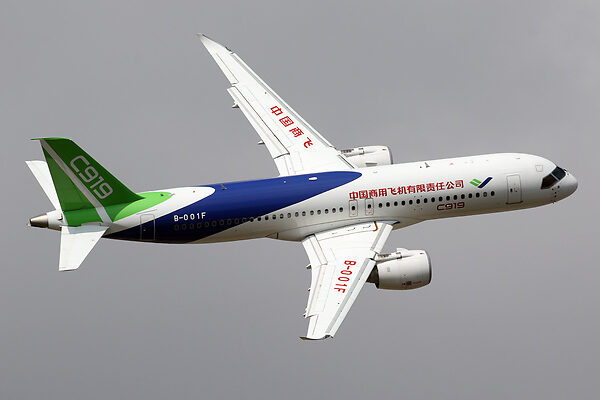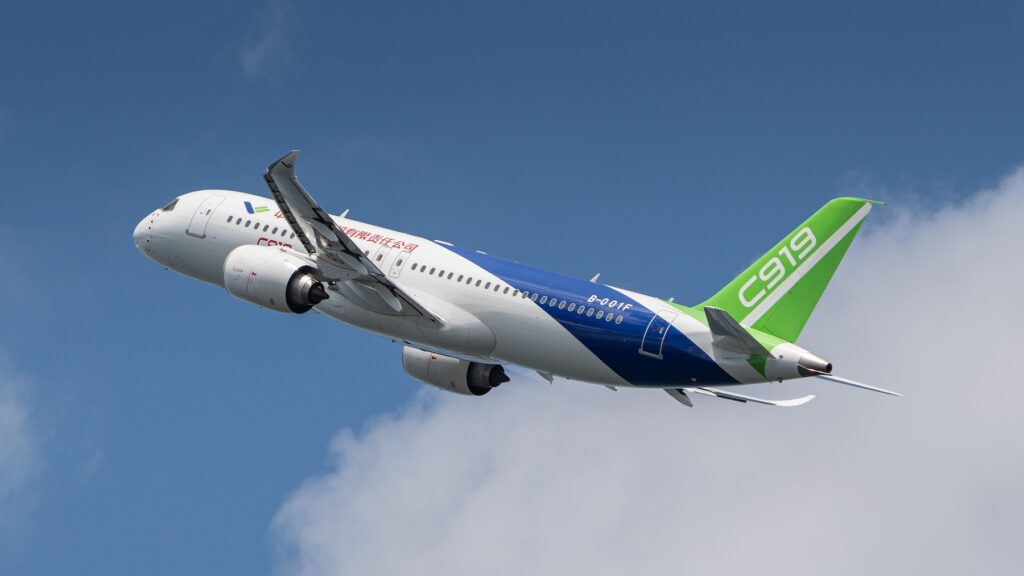La movilidad y el transporte es un reto permanente que avanza de la mano con las alternativas científicas y tecnológicas que la humanidad ha aportado; el desarrollo económico y social que propicia ahora, de acuerdo con políticas internacionales, considera una perspectiva a largo plazo que se centra en la sostenibilidad.
En México es visible el avance en los sistemas carreteros con la construcción de nuevas autopistas que incluyen impactantes puentes y túneles para acortar distancias y por ende tiempo de recorridos; sin embargo los servicios aéreos y ferroviarios tienen un retraso significativo que genera costos muy altos para la sociedad que necesita precisamente su desplazamiento y de la misma forma para el transporte de mercancías.
Europa, norteamérica y en el caso de Asia, en ambos rubros China, han generado avances significativos tanto en la fabricación como en la prestación de servicios. Centrémonos en dos aportaciones del milenario país asiático:
LA AVIACIÓN
Recientemente se ha dado a conocer la puesta en vuelo del C919, aeronave fabricada y ensamblada en China que viene a competir directamente con las americanas Boeing 747 y el Airbus A350, dos de los modelos de aviones más vendidos del mundo.
CNN da cuenta de que las aeronaves son fabricadas por la Corporación de Aeronaves Comerciales de China (COMAC), propiedad estatal de Shanghai. Después de pasar años en desarrollo el avión bimotor hizo su viaje comercial inaugural con la aerolínea de su ciudad natal China Eastern Airlines en mayo de 2023.

El C919 de COMAC hizo su debut internacional con un vuelo en el Salón Aeronáutico de Singapur.
Steven Jiang, jefe de la oficina de Beijing para CNN International, responsable de supervisar la cobertura de la cadena sobre China y sus operaciones en el país, comparte su experiencia al abordar un C919 desde Shanghai hasta Beijing.
A pesar de que en México hay 64 aeropuertos, operados por 5 grupos, a la fecha existen varias terminales vacías y sin movimientos: Palenque y Tuxtla, Chiapas; Tehuacán, Puebla; Cuernavaca, Morelos; Toluca, Estado de México; Poza Rica, Veracruz; Tamuín, San Luis Potosí; Guaymas y Nogales, Sonora; y Ciudad Victoria, Tamaulipas.
Para el caso de Morelos, al final de la administración anterior, las acciones que correspondían al Gobierno del Estado fueron cedidas a la Secretaría de Marina; por su parte la gobernadora Margarita González Saravia, ha dado a conocer que cuenta con el respaldo federal para iniciar operaciones de carga y en la medida de su semana, con vuelos comerciales.
Víctor Sáchez Trujillo, secretario de Desarrollo Económico de Morelos, ratificó que se creará un consejo consultivo con el gobierno e iniciativa privada para comenzar a poner en marcha el aeropuerto “Mariano Matamoros”.
La aerolínea del estado Mexicana de Aviación, recién adquirida por el gobierno del presidente Andrés Manuel López Obrador, reinició operacaiones con cinco aeronaves: tres modelos Boeing 737-800 NG -donadas por la Fuerza Aérea Mexicana y con capacidad para 130 pasajeros- y dos Embraer 145, que son arrendadas a la empresa queretana TAR, en las que pueden transportar a 50 usuarios.
En junio de este año Mexicana firmó un contrato con la brasileña Embraer para la adquisición 10 aeronaves modelo E190-E2 con 108 asientos y otras 10 modelo E195-E2 con 132 asientos.
Bien valdría la pena que el Grupo Aeroportuario, Ferroviario, de Servicios Auxiliares y Conexos Olmeca-Maya-Mexica (GAFSACOMM) S.A. de C.V. —dependiente del Ejército y del cual forma parte Mexicana— volteara los ojos hacia China para ampliar su capacidad de servicio con la más alta tecnología y menor costo.
LOS TRENES
Por otra parte, el gobierno de Jalisco, el viernes 4 de octubre realizó el primer recorrido de prueba de la Línea 4 del tren eléctrico urbano que funciona con unidades fabricadas por la empresa china Railway Rolling Stock Corporation, mismos que tienen un diseño vanguardista, materiales de máxima calidad y funcionalidad a largo plazo.
El gobernador Enrique Alfaro explicó que la nueva ruta aportará una solución para trasladar y conectar a los habitantes de la ciudad de Tlajomulco con el resto del Área Metropolitana de Guadalajara.
«Es el primer sistema de transporte con el modelo de operación de un tren suburbano, es decir, la Línea 4 del tren eléctrico de Tlajomulco va a convivir, en términos ferroviarios, con el tren de carga».
Más de ocho años después de la cancelación del Tren de Alta Velocidad (TAV) México-Querétaro en 2015, el entonces presidente Andrés Manuel López Obrador reveló que dicho proyecto no llegó a concretarse debido a supuestas presiones del Gobierno de Estados Unidos.
En ese entonces el mandatario mexicano informó que la empresa China Railway Construction Corporation (CRCC) lideraba el consorcio constructor, el cual estaba integrado también por las compañías Constructora y Edificadora GIA+A, Prodemex, GHP, Infraestructura Mexicana y Constructora Teya.
En febrero de 2015, la administración federal del entonces presidente Enrique Peña Nieto anunció la cancelación de este proyecto; el argumento empleado por las autoridades mexicanas fue la crisis provocada por el desplome de los precios internacionales del petróleo. El costo del TAV México-Querétaro rondaba los 50 mil millones de pesos.

En septiembre de 2019 tuvimos la oportunidad de visitar en Beijing los talleres del Grupo de Ferrocarriles del Estado Chino (China Estate Railways Group Co, LTD) en donde conocimos el proyecto de “Desarrollo de los Ferrocarriles de Alta Velocidad de China”. Durante la entrevista con el vocero de la empresa se nos reveló que la negociación fue cancelada porque “se les exigía generar un pago mayor al que se había presupestado”.
En Morelos, tras el sismo de 2017, que requirió recursos extraorinadios para la población y cidades afectadas, el entonces gobernador Graco Ramírez Garrido Abreu, canceló el proyecto del denominado Morebus que planteaba una ruta de ida y vuelta sobre un eje troncal que generaría grandes beneficios a la población de la zona metropolitana.
En abril de 2018 el Congreso del Estado formalizó la cancelación del proyecto que había autorizado más de 500 millones de pesos de los mil 350 millones que se invertirían.
Morelos tiene un retraso enorme en movilidad y en sus medios de transporte público; es urgente que exista una modernización y migración a novedosos medios de transporte público.
Al arranque de su gestión el gobernador Cuauhtémoc Blanco anunció la construcción de un tren regional que conectaría Morelos con la Ciudad de México; se proyectaron escalas intermedias y la reactivación del aeropuerto Mariano Matamoros. De la misma forma en 2020 anunció el tren de carga que conectaría a Morelos con Centroamérica y Estados Unidos.
Ninguno de los proyectos se realizó.
Margarita González Saravia cuenta con el respaldo y aprecio de la presidenta Claudia Sheinbaum Pardo; recientemente la mandataria federal, acompañada con secretario de su gabinete, desglosaron los beneficios inmediatos que recibiría Morelos, entre ellos la construcción del Circuito “Tierra y Libertad” y el distribuidor vial para beneficiar a la Universidad Autónoma del Estado de Morelos.
La seguridad con la que ha manifestado el tema aeroportuario la gobernadora González Saravia, revela que se cuenta con el respaldo de la Presidenta de la República.
Aeropuerto de Shenzeng; fotografía tomada en septiembre de 2024.

_________________________________________________
CHINA CONTRIBUTES TO AVIATION AND RAILWAYS
Mobility and transportation is a permanent challenge that advances hand in hand with the scientific and technological alternatives that humanity has contributed; the economic and social development that it now promotes, in accordance with international policies, considers a long-term perspective that focuses on sustainability.
In Mexico, progress is visible in road systems with the construction of new highways that include impressive bridges and tunnels to shorten distances and therefore travel time; however, air and rail services have a significant delay that generates very high costs for the society that needs precisely their movement and in the same way for the transportation of goods.
Europe, North America and in the case of Asia, in both areas China, have generated significant advances in both manufacturing and the provision of services. Let’s focus on two contributions from the ancient Asian country:
AVIATION
The launch of the C919 has recently been announced, an aircraft manufactured and assembled in China that comes to compete directly with the American Boeing 747 and the Airbus A350, two of the best-selling aircraft models in the world.
CNN reports that the aircraft are manufactured by the Commercial Aircraft Corporation of China (COMAC), state-owned in Shanghai. After spending years in development, the twin-engine aircraft made its inaugural commercial trip with its hometown airline China Eastern Airlines in May 2023.
Steven Jiang, head of the Beijing bureau for CNN International, responsible for overseeing the network’s coverage of China and its operations in the country, shares his experience boarding a C919 from Shanghai to Beijing.
COMAC’s C919 has made its international debut with a fly-by at the Singapore Airshow.

Although there are 64 airports in Mexico, operated by 5 groups, to date there are several empty terminals with no traffic: Palenque and Tuxtla, Chiapas; Tehuacán, Puebla; Cuernavaca, Morelos; Toluca, State of Mexico; Poza Rica, Veracruz; Tamuín, San Luis Potosí; Guaymas and Nogales, Sonora; and Ciudad Victoria, Tamaulipas.
In the case of Morelos, at the end of the previous administration, the actions that corresponded to the State Government were transferred to the Navy; for her part, Governor Margarita González Saravia has announced that she has federal support to begin cargo operations and, within the next week, commercial flights.
Víctor Sáchez Trujillo, Secretary of Economic Development of Morelos, confirmed that a consultative council will be created with the government and private initiative to begin to implement the “Mariano Matamoros” airport.
The state airline Mexicana de Aviación, recently acquired by the government of President Andrés Manuel López Obrador, restarted operations with five aircraft: three Boeing 737-800 NG models – donated by the Mexican Air Force and with capacity for 130 passengers – and two Embraer 145, which are leased to the Queretaro company TAR, in which they can transport 50 users.
In June of this year, Mexicana signed a contract with the Brazilian Embraer for the acquisition of 10 E190-E2 model aircraft with 108 seats and another 10 E195-E2 model with 132 seats.
It would be well worth it for the Grupo Aeroportuario, Ferroviario, de Servicios Auxiliares y Conexos Olmeca-Maya-Mexica (GAFSACOMM) S.A. de C.V. —dependent on the Army and of which Mexicana is a part— will turn its eyes to China to expand its service capacity with the highest technology and lower cost.
THE TRAINS
On the other hand, the government of Jalisco, on Friday, October 4, carried out the first test run of Line 4 of the urban electric train that operates with units manufactured by the Chinese company Railway Rolling Stock Corporation, which have an avant-garde design, top-quality materials and long-term functionality.
Governor Enrique Alfaro explained that the new route will provide a solution to transport and connect the inhabitants of the city of Tlajomulco with the rest of the Metropolitan Area of Guadalajara.
«It is the first transportation system with the operation model of a suburban train, that is, Line 4 of the Tlajomulco electric train will coexist, in railway terms, with the freight train.»
More than eight years after the cancellation of the Mexico-Querétaro High Speed Train (TAV) in 2015, then-President Andrés Manuel López Obrador revealed that the project did not come to fruition due to alleged pressure from the United States Government.
At that time, the Mexican president reported that the company China Railway Construction Corporation (CRCC) led the construction consortium, which was also made up of the companies Constructora y Edificadora GIA+A, Prodemex, GHP, Infraestructura Mexicana and Constructora Teya.
In February 2015, the federal administration of then-President Enrique Peña Nieto announced the cancellation of this project; the argument used by the Mexican authorities was the crisis caused by the collapse of international oil prices. The cost of the Mexico-Querétaro high-speed line was around 50 billion pesos.

In September 2019, we had the opportunity to visit the workshops of the China Estate Railways Group Co, LTD in Beijing, where we learned about the “Development of China High-Speed Railways” project. During the interview with the company spokesperson, it was revealed to us that the negotiation was cancelled because “they were required to generate a payment greater than what had been budgeted.”
In Morelos, after the 2017 earthquake, which required extraordinary resources for the affected population and cities, the then governor Graco Ramírez Garrido Abreu cancelled the so-called Morebus project, which proposed a round-trip route on a main axis that would generate great benefits for the population of the metropolitan area.
In April 2018, the State Congress formalized the cancellation of the project that had authorized more than 500 million pesos of the 1,350 million that would be invested.
Morelos has a huge delay in mobility and in its means of public transport; it is urgent that there be a modernization and migration to new means of public transport.
At the beginning of his administration, Governor Cuauhtémoc Blanco announced the construction of a regional train that would connect Morelos with Mexico City; intermediate stops and the reactivation of the Mariano Matamoros airport were planned. Similarly, in 2020, she announced the freight train that would connect Morelos with Central America and the United States.
Neither of the projects were carried out.
Margarita González Saravia has the support and appreciation of President Claudia Sheinbaum Pardo; recently the federal president, accompanied by her cabinet secretary, broke down the immediate benefits that Morelos would receive, including the construction of the “Tierra y Libertad” Circuit and the road interchange to benefit the Autonomous University of the State of Morelos.
The confidence with which Governor González Saravia has expressed the issue of the airport reveals that she has the support of the President of the Republic.
